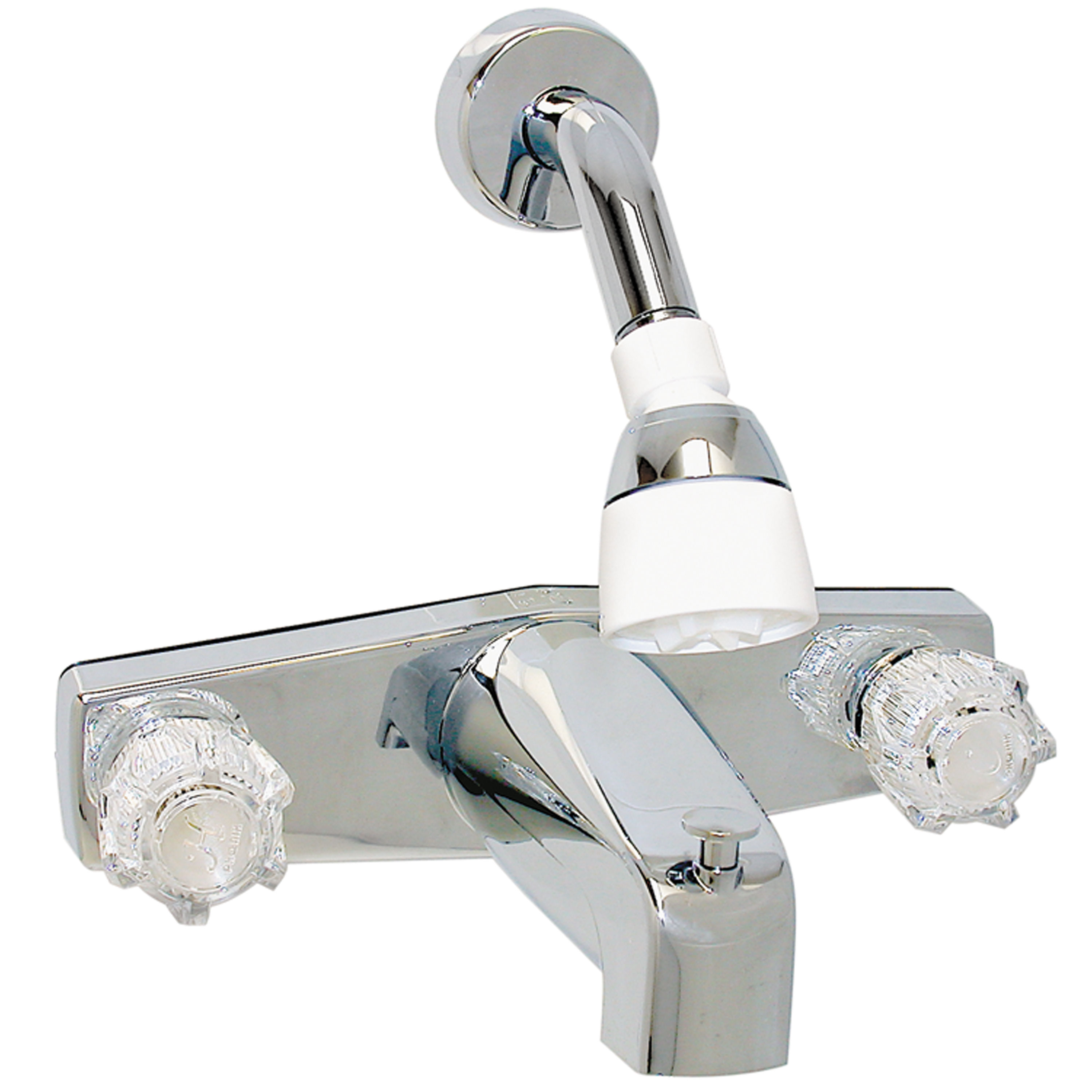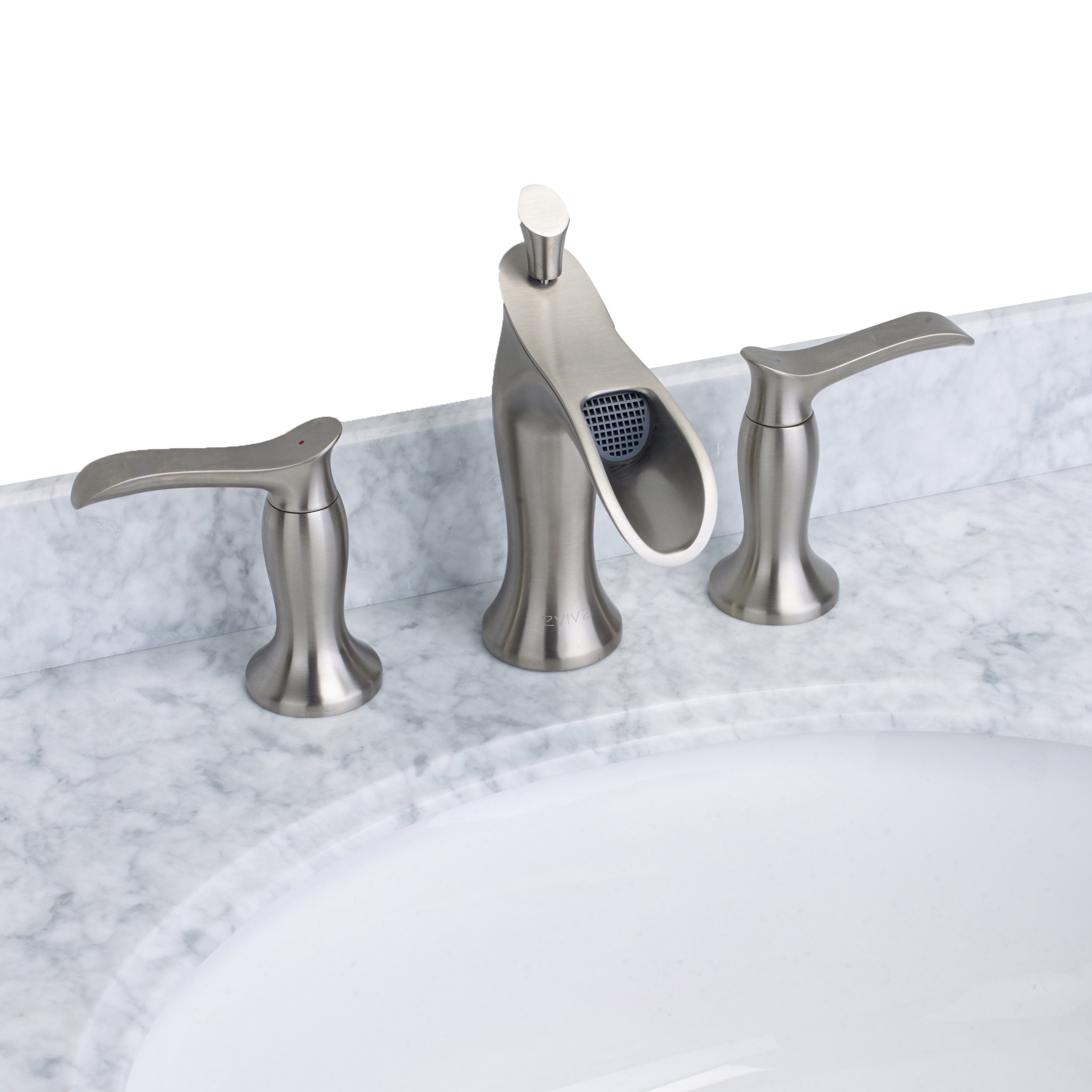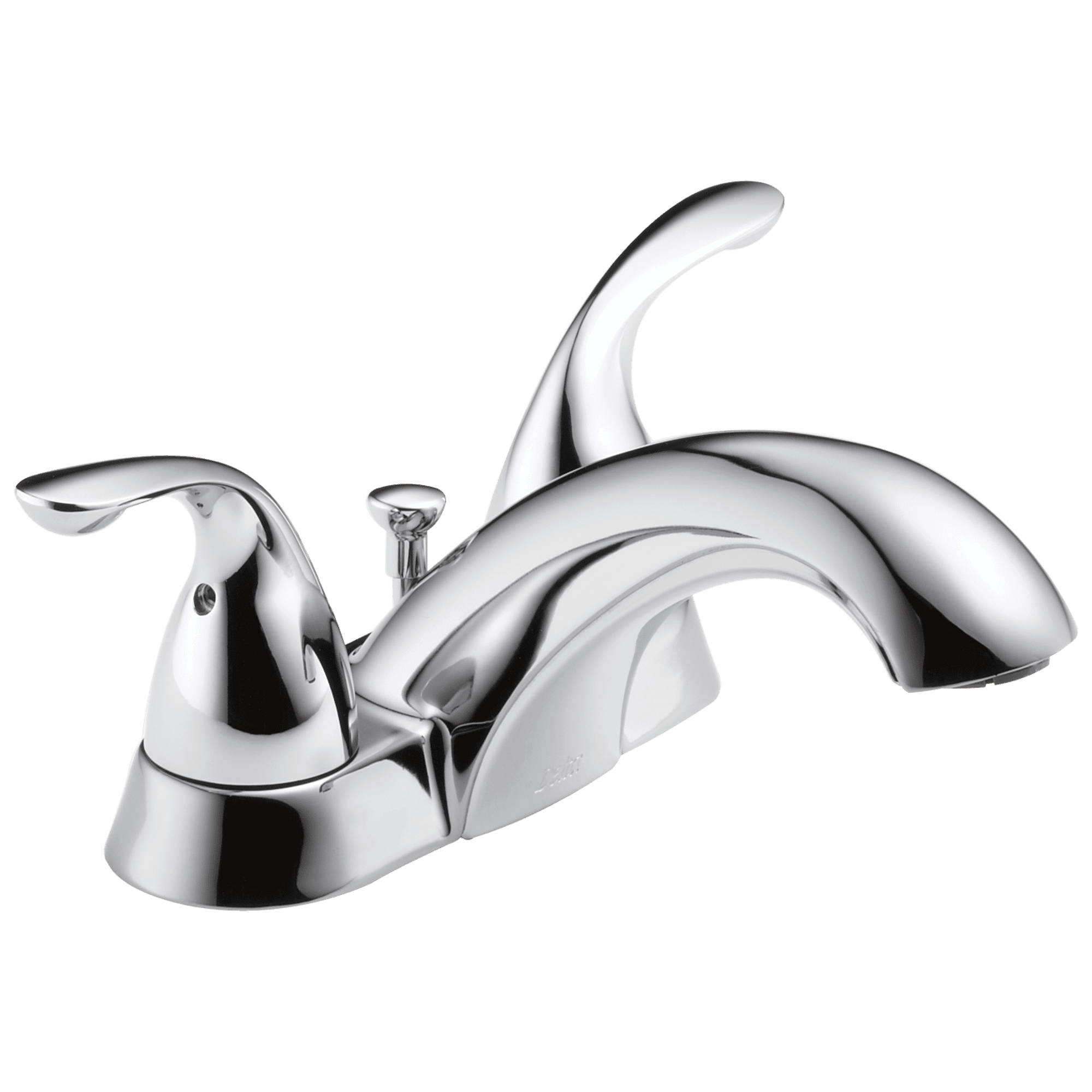Functionality and Design: Bathroom Faucet 2 Handle Vs 1 Handle

Choosing the right bathroom faucet can significantly impact the overall functionality and aesthetics of your bathroom. Two popular options are 2-handle and 1-handle faucets, each offering distinct advantages and disadvantages. This section delves into the functionalities and designs of both types, providing a comprehensive understanding of their strengths and weaknesses.
Functionality Comparison
The primary difference between 2-handle and 1-handle faucets lies in their control mechanisms. 2-handle faucets have separate handles for hot and cold water, while 1-handle faucets use a single lever to control both temperature and flow.
Ease of Use
- 2-handle faucets: Typically considered more challenging to operate, particularly for individuals with limited hand mobility. The need to adjust two separate handles to achieve the desired temperature can be cumbersome and time-consuming.
- 1-handle faucets: Offer a more intuitive and user-friendly experience. The single lever allows for effortless temperature and flow control with a simple movement. This makes them a better choice for families with young children or individuals with physical limitations.
Temperature Control
- 2-handle faucets: Provide precise temperature control, allowing users to fine-tune the water temperature by adjusting the hot and cold handles independently. This precision is particularly beneficial for individuals who prefer specific water temperatures for bathing or washing.
- 1-handle faucets: Can be less precise in temperature control, especially when transitioning between hot and cold water. However, modern 1-handle faucets with ceramic disc cartridges offer improved temperature stability and reduced water waste.
Water Flow
- 2-handle faucets: Typically offer greater control over water flow. By adjusting the handles individually, users can achieve a wider range of flow rates, from a gentle trickle to a powerful stream.
- 1-handle faucets: Often have a more restricted flow range, with the lever typically controlling both temperature and flow simultaneously. However, some 1-handle faucets feature separate flow control mechanisms, offering greater flexibility.
Design Comparison
The design of bathroom faucets plays a crucial role in their aesthetic appeal and overall bathroom décor. 2-handle and 1-handle faucets have distinct design characteristics that influence their visual impact.
Lever Type
- 2-handle faucets: Typically feature traditional cross-shaped handles, although other styles like lever handles are also available. The cross-shaped handles provide a classic and elegant look, often found in traditional bathroom designs.
- 1-handle faucets: Feature a single lever that can be either straight or curved. Straight levers offer a minimalist and modern look, while curved levers add a touch of sophistication. The lever design can significantly influence the overall aesthetic of the faucet.
Handle Placement
- 2-handle faucets: The handles are positioned on either side of the spout, offering a symmetrical and balanced appearance. This placement is particularly common in traditional and transitional bathroom designs.
- 1-handle faucets: The single lever is typically positioned on the side of the spout, creating an asymmetrical design. This placement is often associated with contemporary and modern bathroom styles.
Water Flow Control Mechanisms
| Feature | 2-Handle Faucet | 1-Handle Faucet |
|---|---|---|
| Control Mechanism | Two separate handles for hot and cold water | Single lever for both temperature and flow |
| Flow Control | Independent adjustment of hot and cold handles for precise flow control | Simultaneous control of temperature and flow with a single lever |
| Temperature Control | Precise temperature control by adjusting hot and cold handles independently | Less precise temperature control, but modern designs offer improved stability |
Installation and Maintenance

Installing a bathroom faucet might seem daunting, but with the right tools and a bit of patience, it’s a manageable DIY project. Whether you’re opting for a classic 2-handle faucet or a sleek single-handle model, understanding the installation process and potential maintenance needs is key to ensuring smooth operation and longevity.
Installation Process
Installing a bathroom faucet involves several steps, each requiring careful attention to detail. The process typically involves shutting off the water supply, disconnecting the old faucet, preparing the sink, installing the new faucet, and testing for leaks.
- Shut off the water supply: Locate the shut-off valves for the hot and cold water lines supplying your sink. Turn these valves clockwise to completely stop the water flow.
- Disconnect the old faucet: Once the water is off, use a wrench to loosen the nuts securing the old faucet to the sink. Carefully remove the old faucet, taking note of the connections and components.
- Prepare the sink: Clean the sink’s mounting holes and ensure they are free of debris. If necessary, use a pipe thread sealant to prevent leaks.
- Install the new faucet: Carefully align the new faucet with the mounting holes and secure it with the supplied nuts. Tighten the nuts firmly, but avoid overtightening to prevent damage.
- Connect the water lines: Attach the hot and cold water lines to the faucet’s inlets, ensuring a secure connection.
- Turn on the water supply: Slowly turn the shut-off valves counterclockwise to allow water to flow through the new faucet. Check for leaks at the connections and under the sink.
Troubleshooting Installation Issues
While the installation process is straightforward, certain issues may arise, requiring troubleshooting.
- Leaking faucet: A leaking faucet is often caused by loose connections, worn-out washers, or a faulty cartridge. Check the connections, replace washers if necessary, and consider replacing the cartridge if the leak persists.
- Faucet not turning: If the faucet handle is stiff or doesn’t turn, the problem could be a clogged cartridge or a broken valve stem. Clean the cartridge or replace it if necessary.
- Water pressure issues: Low water pressure might be due to a clogged aerator, a partially closed shut-off valve, or a problem with the main water line. Check the aerator, open the shut-off valve fully, and contact a plumber if the issue persists.
Maintenance Requirements
Both 2-handle and 1-handle faucets require regular maintenance to ensure optimal performance and longevity.
- Cartridge replacement: Cartridge replacement is a common maintenance task for single-handle faucets. The cartridge controls the water flow and temperature, and over time, it can wear out or become clogged, requiring replacement.
- Cleaning: Regular cleaning is essential for both types of faucets. Use a mild cleaner and a soft cloth to wipe down the faucet’s surface and remove mineral deposits.
- Repair: Occasionally, faucets may require repairs, such as replacing washers, O-rings, or other components.
Maintenance Comparison
While both 2-handle and 1-handle faucets require maintenance, there are some differences in their upkeep.
| Feature | 2-Handle Faucet | 1-Handle Faucet |
|---|---|---|
| Cartridge Replacement | Less frequent, as each handle has a separate valve | More frequent, as the cartridge controls both hot and cold water |
| Cleaning | Requires cleaning two separate handles | Requires cleaning a single handle |
| Repair | May involve replacing individual components for each handle | Typically involves replacing the entire cartridge |
Style and Aesthetics

The choice of bathroom faucet goes beyond mere functionality; it’s a statement of personal style and a key element in creating a cohesive bathroom aesthetic. Both 2-handle and 1-handle faucets offer a diverse range of styles and finishes, allowing you to tailor your bathroom to your unique taste and vision.
Faucet Styles and Finishes, Bathroom faucet 2 handle vs 1 handle
The design of your bathroom faucet plays a significant role in shaping the overall ambiance of the space. Whether you’re drawn to the classic elegance of a 2-handle faucet or the sleek simplicity of a 1-handle design, the right faucet can elevate your bathroom decor to new heights.
2-Handle Faucets
2-handle faucets are renowned for their traditional charm and classic appeal. They often feature intricate details, such as cross handles, lever handles, or porcelain knobs, adding a touch of vintage sophistication to any bathroom. These faucets are available in a wide array of finishes, from polished chrome and brushed nickel to antique brass and oil-rubbed bronze, allowing you to achieve a look that complements your bathroom’s existing style.
- Cross Handles: These faucets feature cross-shaped handles that offer a vintage and elegant aesthetic. They are commonly found in traditional and farmhouse-style bathrooms, adding a touch of timeless charm.
- Lever Handles: Lever handles provide a more contemporary twist on the 2-handle design. They are often found in transitional bathrooms, seamlessly blending traditional and modern elements.
- Porcelain Knobs: Porcelain knobs are a distinctive feature of antique and vintage faucets. They add a touch of old-world elegance and are often found in bathrooms with a classic or Victorian theme.
1-Handle Faucets
1-handle faucets embody modern design principles, prioritizing functionality and sleek aesthetics. They typically feature a single lever that controls both water temperature and flow, making them easy to operate and providing a streamlined look. 1-handle faucets are available in a wide range of finishes, from polished chrome and brushed nickel to matte black and gold, allowing you to create a contemporary or minimalist bathroom space.
- Single Lever: The defining feature of 1-handle faucets, the single lever provides effortless control over water temperature and flow. This design is often found in modern and contemporary bathrooms, emphasizing simplicity and functionality.
- Contemporary Designs: 1-handle faucets often feature minimalist designs with clean lines and geometric shapes, perfectly complementing modern and minimalist bathroom decor.
- Variety of Finishes: 1-handle faucets offer a wide range of finishes, from classic chrome and nickel to trendy matte black and gold, allowing you to personalize your bathroom space.
Complementing Bathroom Decor Styles
The choice of bathroom faucet should harmonize with the overall style of your bathroom. Different faucet styles and finishes complement various bathroom decor themes, creating a cohesive and visually appealing space.
Traditional Bathrooms
Traditional bathrooms often feature ornate details, warm color palettes, and classic fixtures. 2-handle faucets with cross handles, lever handles, or porcelain knobs are ideal for enhancing the traditional aesthetic. Finishes like polished brass, oil-rubbed bronze, and antique nickel add a touch of vintage charm.
Modern Bathrooms
Modern bathrooms prioritize clean lines, minimalist designs, and sleek fixtures. 1-handle faucets with single levers and contemporary designs seamlessly integrate into this style. Finishes like polished chrome, brushed nickel, or matte black create a sophisticated and minimalist look.
Transitional Bathrooms
Transitional bathrooms blend traditional and modern elements, creating a balanced and harmonious space. 2-handle faucets with lever handles or 1-handle faucets with contemporary designs can be used to achieve this look. Finishes like brushed nickel or satin brass offer a versatile and elegant appeal.
Farmhouse Bathrooms
Farmhouse bathrooms often feature rustic elements, natural materials, and a cozy ambiance. 2-handle faucets with cross handles or lever handles in finishes like oil-rubbed bronze or antique nickel create a rustic charm.
Contemporary Bathrooms
Contemporary bathrooms prioritize bold colors, geometric shapes, and unique fixtures. 1-handle faucets with minimalist designs and bold finishes like matte black, gold, or copper add a touch of modern flair.